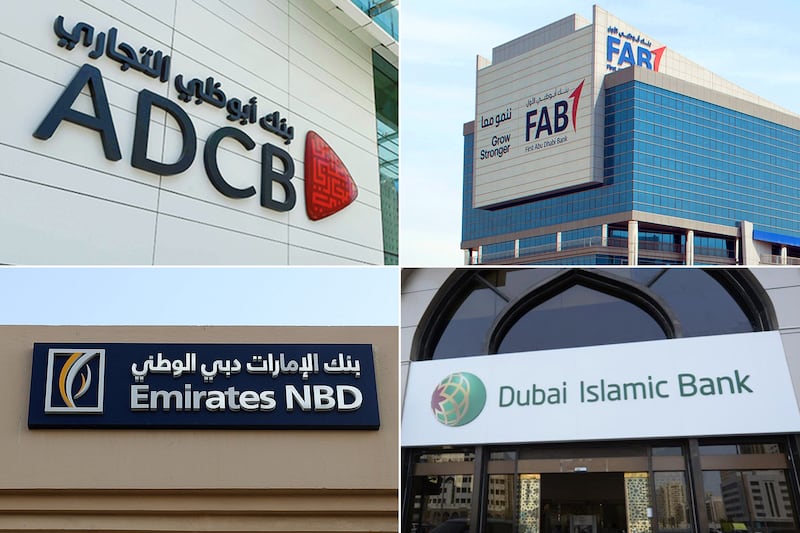Profits of the four largest banks in the UAE grew sharply in the first half of this year, boosted by rising interest rates and the strong growth momentum in the Arab world’s second-largest economy, Moody’s Investors Service has said.
The four largest banks – First Abu Dhabi Bank, Emirates NBD, Abu Dhabi Commercial Bank and Dubai Islamic Bank reported a combined net profit of $7.4 billion, up from $4.4 billion for the same period of 2022, the rating agency said in a report on Wednesday.
The combined net interest income of the lenders, which accounted for 77 per cent of total banking assets in the UAE as of March 2023, jumped 37 per cent annually.
“Interest income growth outweighed funding cost growth, as low-cost current and savings accounts remained a big contributor to the banks' funding, driving net interest margins (NIM) up to 2.4 per cent for the first half of 2023, from 1.9 per cent a year earlier,” Moody’s analysts, led by Francesca Paolino, said.
Non-interest income also remained strong amid “increased business volumes” and strong economic momentum in the UAE.
The aggregate non-interest income for the banks rose 41 per cent year on year, mainly driven by large gains in trading and fee generating activity, which grew 11 per cent annually during the first half of the year.
The sharp rise in the bottom line of the lenders reflects “strong growth in both interest and non-interest income”, Ms Paolino said.
“The uptrend … resulted from greater consumer confidence as macroeconomic conditions remain strong, driven by high oil prices and strong activity in non-oil sectors in the UAE, such as trade, tourism and real estate.’’

The UAE's economy rebounded strongly last year from the slowdown caused by Covid-19, with the growth momentum extending into 2023.
It grew an annual 3.8 per cent in the first quarter of this year after a 7.9 per cent expansion in 2022, boosted by a sharp growth in the non-oil sector as it continues to push for diversification.
Gross domestic product in the three months to the end of March increased to Dh418.3 billion, with most sectors and economic activities that serve as “the key pillars of the national economy made significant contributions”, Abdulla bin Touq, Minister of Economy said earlier this month, quoting Federal Centre for Competitiveness and Statistics data.
Non-oil GDP rose 4.5 per cent year on year to Dh312 billion.
Banks in the UAE, like their regional peers, are beneficiaries of higher interest rates amid relatively lower inflation in the hydrocarbon-rich region.
Most central banks in the six-member GCC economic bloc peg their currencies to the US dollar and follow the US Federal Reserve's interest rate moves.
The Fed has aggressively increased its benchmark rates over the past several quarters to bring inflation down to a 2 per cent target range in the world's largest economy.
In July, the US regulator increased its policy rate by 0.25 percentage points, pushing it to the highest level in 22 years. It is expected to raise the rates at least one more time this year.

Moody’s said combined operating expenses of the top four UAE lenders increased 19 per cent on an annual basis in the first six months, driven by “higher staff costs and technology investments”.
However, a 38 per cent jump in operating income “more than offset” the increase in costs, and banks reported an improved cost-to-income ratio of about 27 per cent, it added.
Loan-loss provisions during the first half of the year remained lower than their peak in 2020, with the four banks' aggregate impairment charges staying stable.
“The banks' aggregate cost of risk was below pandemic levels at 0.7 per cent of gross loans in the first half of 2023,” Moody’s said.
The rating agency said it expects bottom-line profitability to increase further this year, underpinned by return on assets improving to 2 per cent during the first six months of the year, well above the 1.3 per cent recorded a year earlier.
“High interest rates and business activity, along with increasing operating costs and steady provisions, will continue to support net profits,” Moody’s analysts said.







